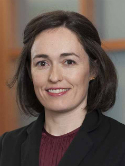A novel approach to quantify heterogeneity of intrahepatic cholangiocarcinoma: The hidden-genome classifier Journal Article
| Authors: | Song, Y.; Boerner, T.; Drill, E.; Shin, P.; Kumar, S.; Sigel, C.; Cercek, A.; Kemeny, N.; Abou-Alfa, G.; Iacobuzio-Donahue, C.; Cowzer, D.; Schultz, N.; Walch, H.; Balachandran, V.; Koerkamp, B. G.; Kingham, P.; Soares, K.; Wei, A.; D’Angelica, M.; Drebin, J.; Chandwani, R.; Harding, J. J.; Jarnagin, W. |
| Article Title: | A novel approach to quantify heterogeneity of intrahepatic cholangiocarcinoma: The hidden-genome classifier |
| Abstract: | Purpose: Intrahepatic cholangiocarcinoma (IHC) is a heterogeneous tumor. The hidden-genome classifier, a supervised machine learning–based algorithm, was used to quantify tumor heterogeneity and improve classification. Experimental Design: A retrospective review of 1,370 patients with IHC, extrahepatic cholangiocarcinoma (EHC), gallbladder cancer (GBC), hepatocellular carcinoma (HCC), or biphenotypic tumors was conducted. A hidden-genome model classified 527 IHC based on genetic similarity to EHC/GBC or HCC. Genetic, histologic, and clinical data were correlated. Results: In this study, 410 IHC (78%) had >50% genetic homology with EHC/GBC; 122 (23%) had >90% homology (“biliary class”), characterized by alterations of KRAS, SMAD4, and CDKN2A loss; 117 IHC (22%) had >50% genetic homology with HCC; and 30 (5.7%) had >90% homology (“HCC class”), characterized by TERT alterations. Patients with biliary- versus non-biliary-class IHC had median overall survival (OS) of 1 year (95% CI, 0.77, 1.5) versus 1.8 years (95% CI, 1.6, 2.0) for unresectable disease and 2.4 years (95% CI, 2.1, NR) versus 5.1 years (95% CI, 4.8, 6.9) for resectable disease. Large-duct IHC (n 1⁄4 28) was more common in the biliary class (n 1⁄4 27); the HCC class was composed mostly of small-duct IHC (64%, P 1⁄4 0.02). The hidden genomic classifier predicted OS independent of FGFR2 and IDH1 alterations. By contrast, the histology subtype did not predict OS. Conclusions: IHC genetics form a spectrum with worse OS for tumors genetically aligned with EHC/GBC. The classifier proved superior to histologic subtypes for predicting OS independent of FGFR2 and IDH1 alterations. These results may explain the differential treatment responses seen in IHC and may direct therapy by helping stratify patients in future clinical trials. ©2024 American Association for Cancer Research. |
| Keywords: | adult; aged; aged, 80 and over; middle aged; retrospective studies; gene mutation; major clinical study; overall survival; genetics; mutation; mortality; liver cell carcinoma; carcinoma, hepatocellular; liver neoplasms; tumor volume; cohort analysis; pathology; retrospective study; algorithms; protein p53; tumor marker; prediction; histology; algorithm; liver tumor; bile duct carcinoma; bile duct neoplasms; cholangiocarcinoma; cyclin dependent kinase inhibitor 2a; gallbladder neoplasms; tumor gene; gallbladder cancer; b raf kinase; fibroblast growth factor receptor 2; receptor, fibroblast growth factor, type 2; genetic heterogeneity; isocitrate dehydrogenase; bile duct tumor; isocitrate dehydrogenase 1; smad4 protein; gallbladder tumor; classifier; machine learning; high throughput sequencing; genetic similarity; idh1 protein, human; very elderly; humans; prognosis; human; male; female; article; fgfr2 protein, human; biomarkers, tumor |
| Journal Title: | Clinical Cancer Research |
| Volume: | 30 |
| Issue: | 16 |
| ISSN: | 1078-0432 |
| Publisher: | American Association for Cancer Research |
| Date Published: | 2024-08-15 |
| Start Page: | 3499 |
| End Page: | 3511 |
| Language: | English |
| DOI: | 10.1158/1078-0432.Ccr-24-0657 |
| PUBMED: | 38864854 |
| PROVIDER: | scopus |
| PMCID: | PMC11326964 |
| DOI/URL: | |
| Notes: | The MSK Cancer Center Support Grant (P30 CA008748) is acknowledge in the PDF -- Corresponding authors is MSK author: William Jarnagin -- Source: Scopus |
Altmetric
Citation Impact
BMJ Impact Analytics
MSK Authors
Related MSK Work





















